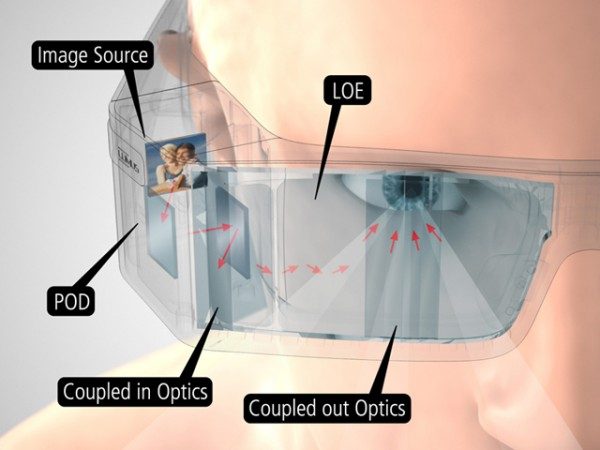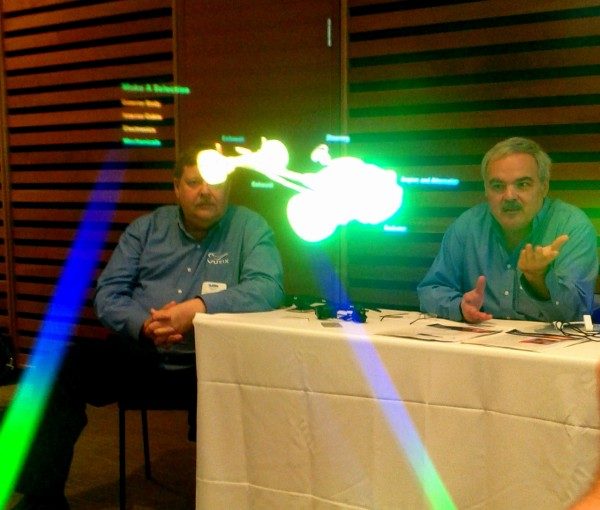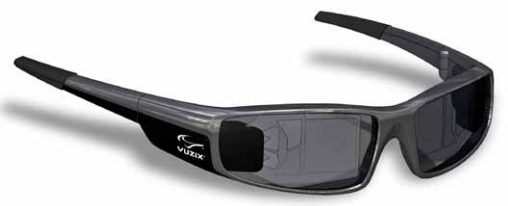While Google’s Project Glass may have nabbed much of the AR spotlight lately, Vuzix is hard at work on some very interesting augmented reality glasses which could hit the market long before Project Glass. Using side-mounted optical engines and waveguide optics, Vuzix’s upcoming augmented reality glasses create an image that looks like something straight out of a sci-fi film.
Vuzix has been involved for some time with virtual reality and augmented reality products but this appears to be the first time that the company is using side-mounted optical engines with waveguide lenses. This technology allows for the creation of AR glasses that look like little more than regular sunglasses but are capable of showing the user augmented reality information. This is the consumer concept version of Vuzix’s SMART Glasses:
Though not yet in production, you can see from the photos that the company is making great progress on this technology. Vuzix is aiming for 1280×720 (720p) resolution and 30-50 degree field of view, however it could be more depending upon the model.
“Vuzix is under contract with the US Army to develop a wide field of view version of the waveguide that should be well over 50 degrees,” said Paul Travers, president of Vuzix, in a recent LinkedIn discussion.
The company demonstrated their new augmented reality glasses at OARN 2012 conference last week. Here are two more photos of what it looks like through Vuzix’s SMART Glasses:
The camera used obviously had a hard time capturing the full detail of the bright augmented reality images.
“It is very difficult to record a virtual image through a waveguide. Some of the artifacts you see are related to that. This is a prototype optic though and so it does have its issues. That said it is amazing to look through and being so thin it is hard to believe it can be done!” said Travers regarding the lines that seem to emanate from the bottom of the display toward the virtual image.
Below you can see Travers demonstrating the SMART Glasses:
Travers shared this video which demonstrates some industrial applications for AR technology:
Optical Engine and Waveguide Technology

The technology that Vuzix is using for these augmented reality glasses involves two primary components. First is the optical engine which actually produces the light that creates the image. The engines are built into the sides of the glasses near the temple. Light projects forward into the waveguide. The waveguide is a specially designed lens which guides the light from the optical engine down the lens and then bounces it into the user’s eye.
Augmented Reality Glasses on the Market Before Google Glass?
The Reality/Shifting blog where these photos were posted notes that the company says the SMART Glasses should be available very soon:
“They expressed confidence that their product will be available on the market in about 6 months. Having looked through the glass piece myself, I am inclined to believe them,” said Lyuba Encheva on the blog.
Travers says a monocular model could ship at the end of October!
“We have fully functioning waveguides and a monocular pair that uses them will be shipping by the end of the month (or so)”
Vuzix appears to be readying three models of augmented reality glasses that make use of their display engine and waveguide. They have prototype variants for consumer, industrial, and military uses:
There is no word on pricing yet but we’ll keep you updated as soon as Vuzix makes that info available.









